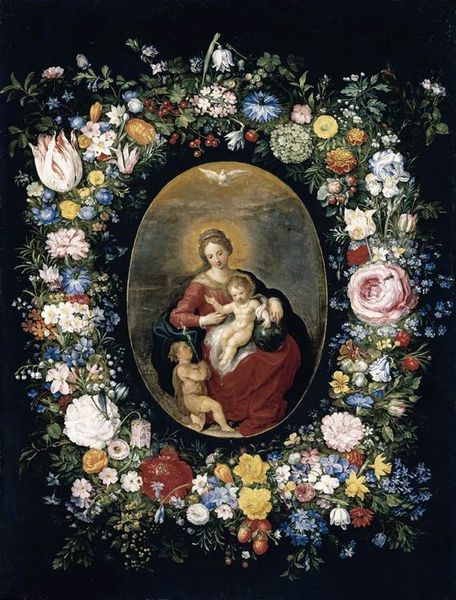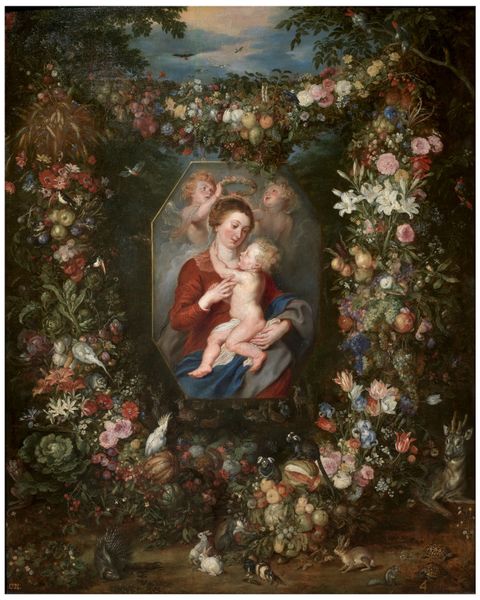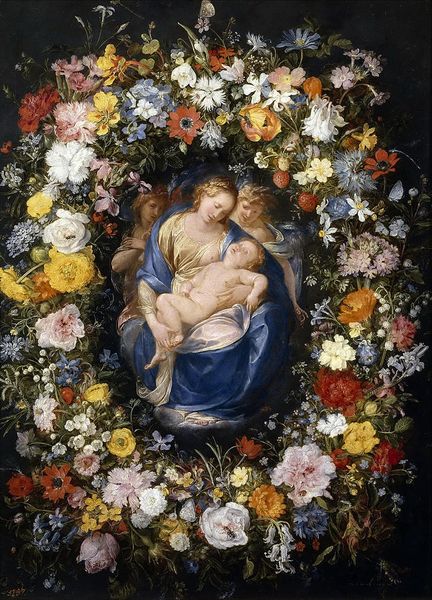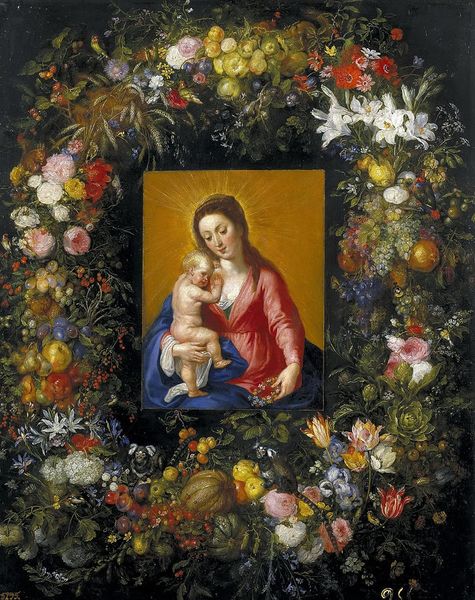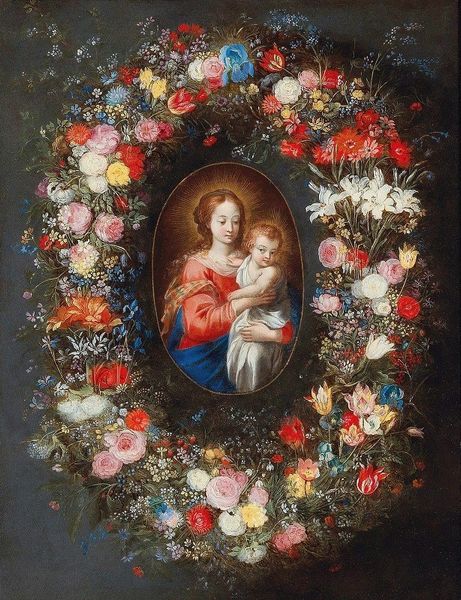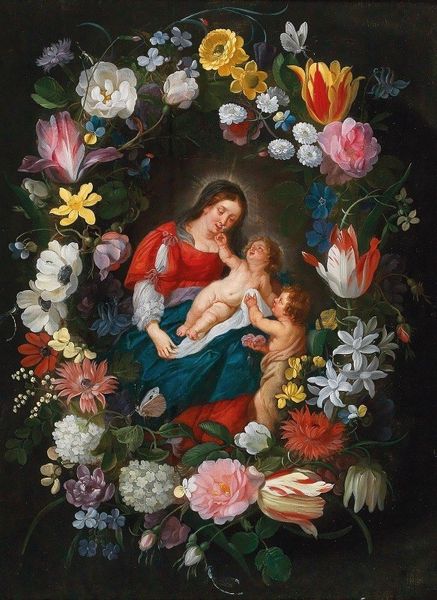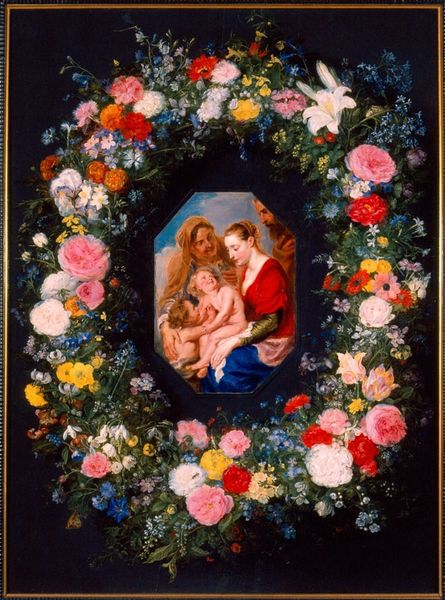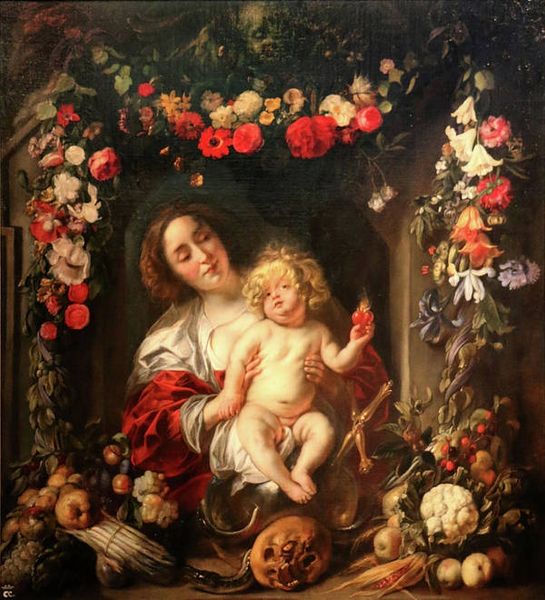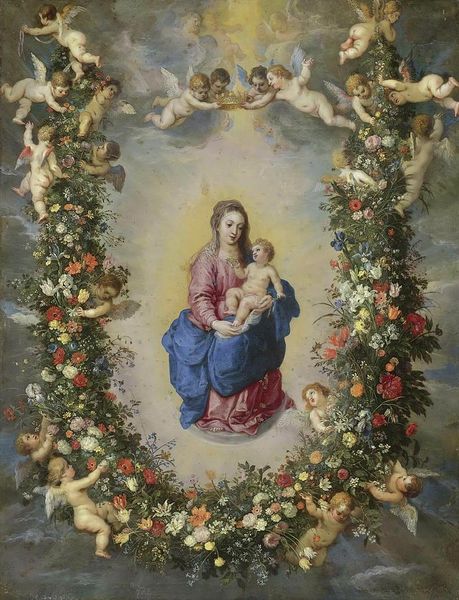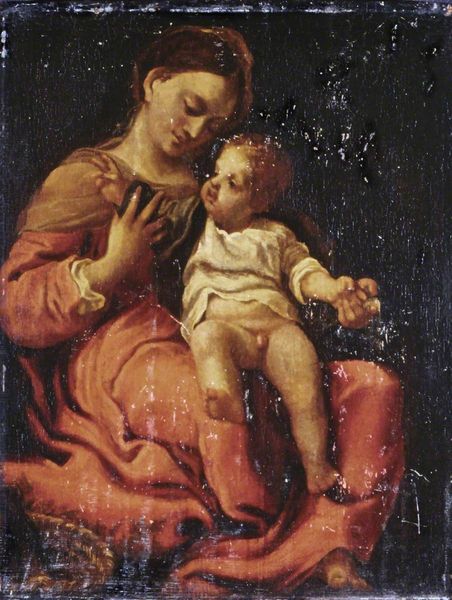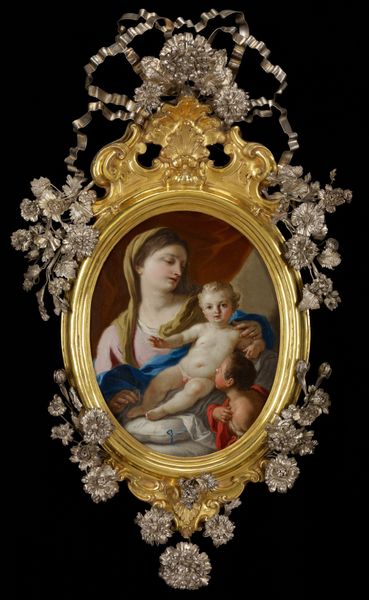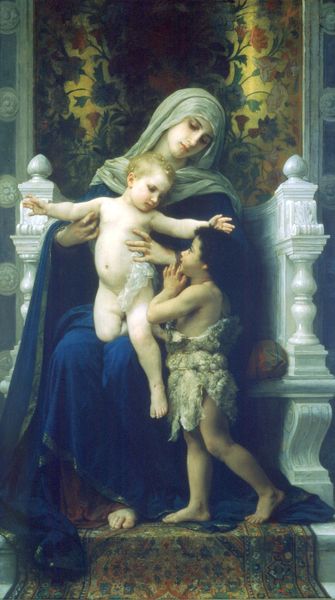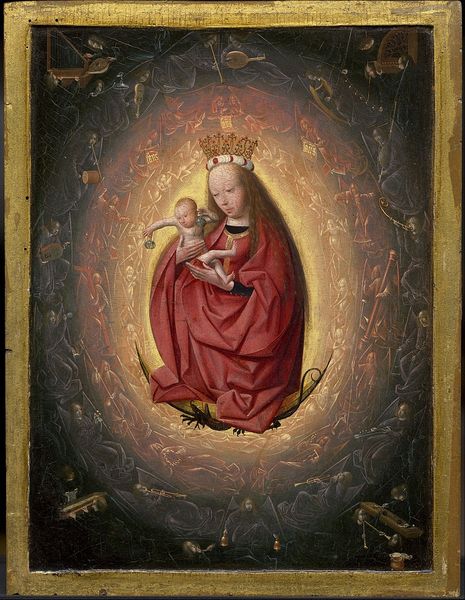
painting, oil-paint
#
baroque
#
painting
#
oil-paint
#
landscape
#
oil painting
#
history-painting
#
italian-renaissance
Dimensions: 83.5 x 65 cm
Copyright: Public domain
Curator: What strikes me immediately is the sheer volume of the floral garland. The texture feels incredibly rich. Editor: Indeed! This is "The Virgin and Child in a Garland of Flowers," a collaborative piece from 1621. The central figures are by Peter Paul Rubens, while Jan Brueghel the Elder painted the surrounding floral arrangement. It’s a fascinating example of baroque painting. Curator: Collaborative works are so interesting from a materialist perspective, aren’t they? Thinking about the division of labor, the artistic practices that come together to create a singular piece, who has time for such an artwork, and under what economic conditions is this possible. I'm curious about the sourcing of the pigments and who was doing the labor in each area? Editor: Absolutely. And we can look deeper, of course. I think we can interpret this composition within the historical context of religious iconography. Mary is literally framed by symbols of fertility, abundance, and the natural world. But her downcast gaze shows a foreknowledge of her child's destiny. Curator: I like how the arrangement literally positions her within a "natural" order, re-inscribing ideals about motherhood as inextricable from some notion of nature and divinity, obscuring the cultural labor involved in performing idealized motherhood. Editor: Yes, these paintings affirmed very specific societal roles! But consider, too, the impact on the viewer. The abundance and richness, heightened by the oil paint, served to overwhelm the senses. The sheer scale of these types of devotional pieces encouraged both reverence and, perhaps, obedience. It would be amazing to have a lab break down each step of sourcing, trading, and the movement of goods it required to complete this religious display! Curator: Yes! Also, it is worth asking ourselves, whose gaze is privileged here? Are women able to find an empowering message or a set of unachievable ideals? Editor: Precisely. When viewed through today's lenses, questions surrounding gender roles and their potential oppression naturally come to the fore. Curator: It's a reminder that art doesn't exist in a vacuum; that these devotional images carried social and political weight in their time, influencing and reinforcing cultural norms that are still felt today. Editor: It is that convergence of craft, commerce, and iconographic intent that makes the artwork particularly fascinating for me.
Comments
No comments
Be the first to comment and join the conversation on the ultimate creative platform.
